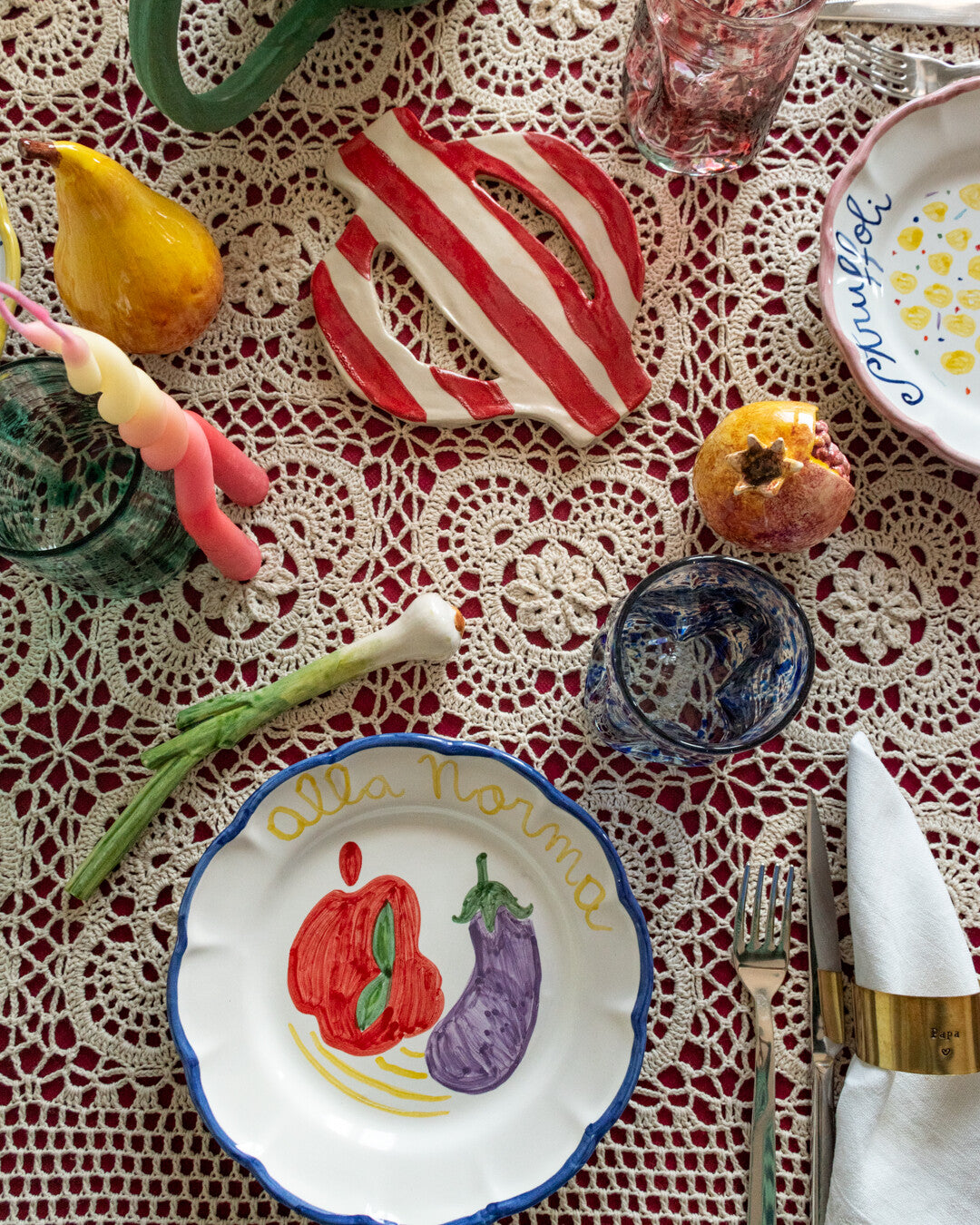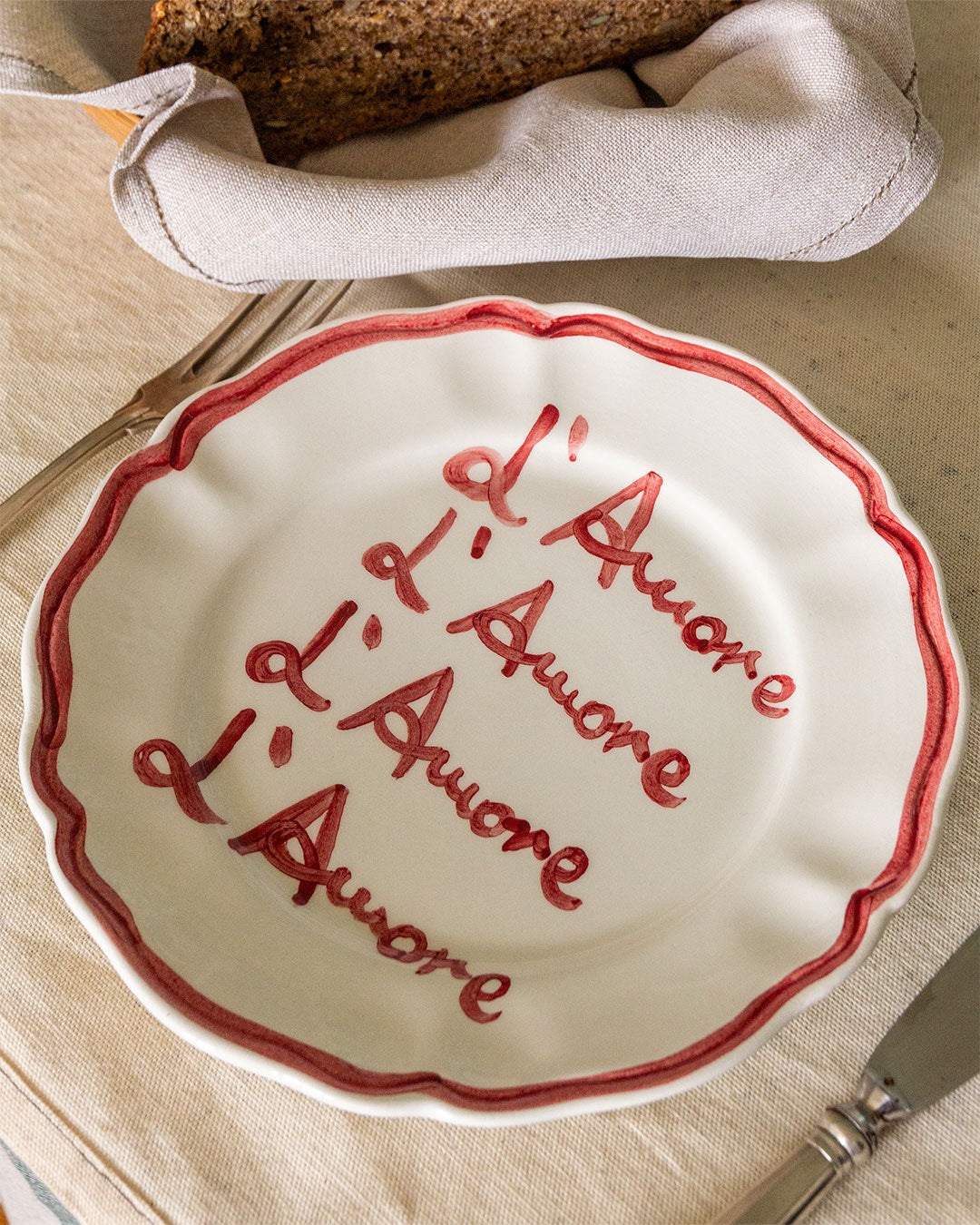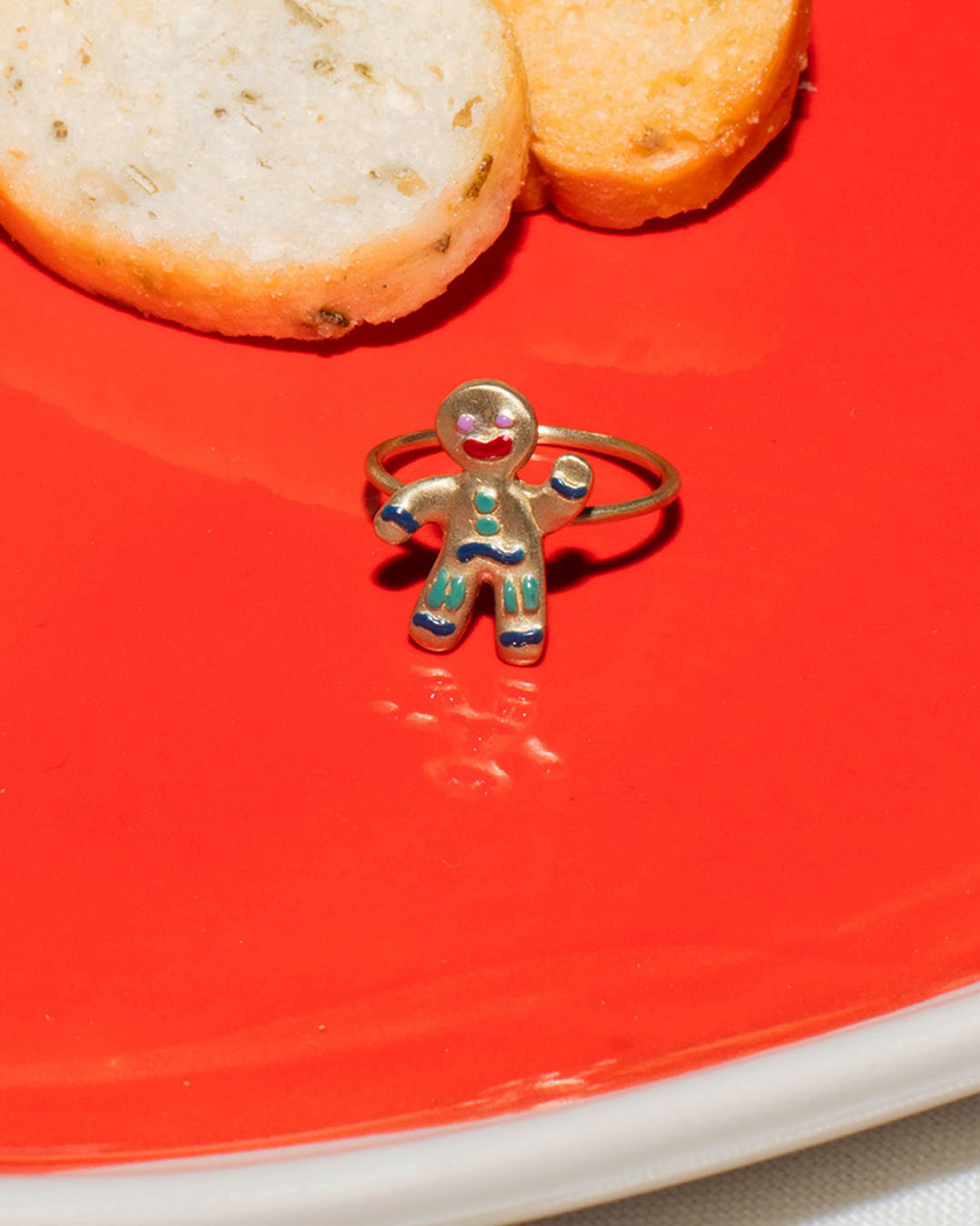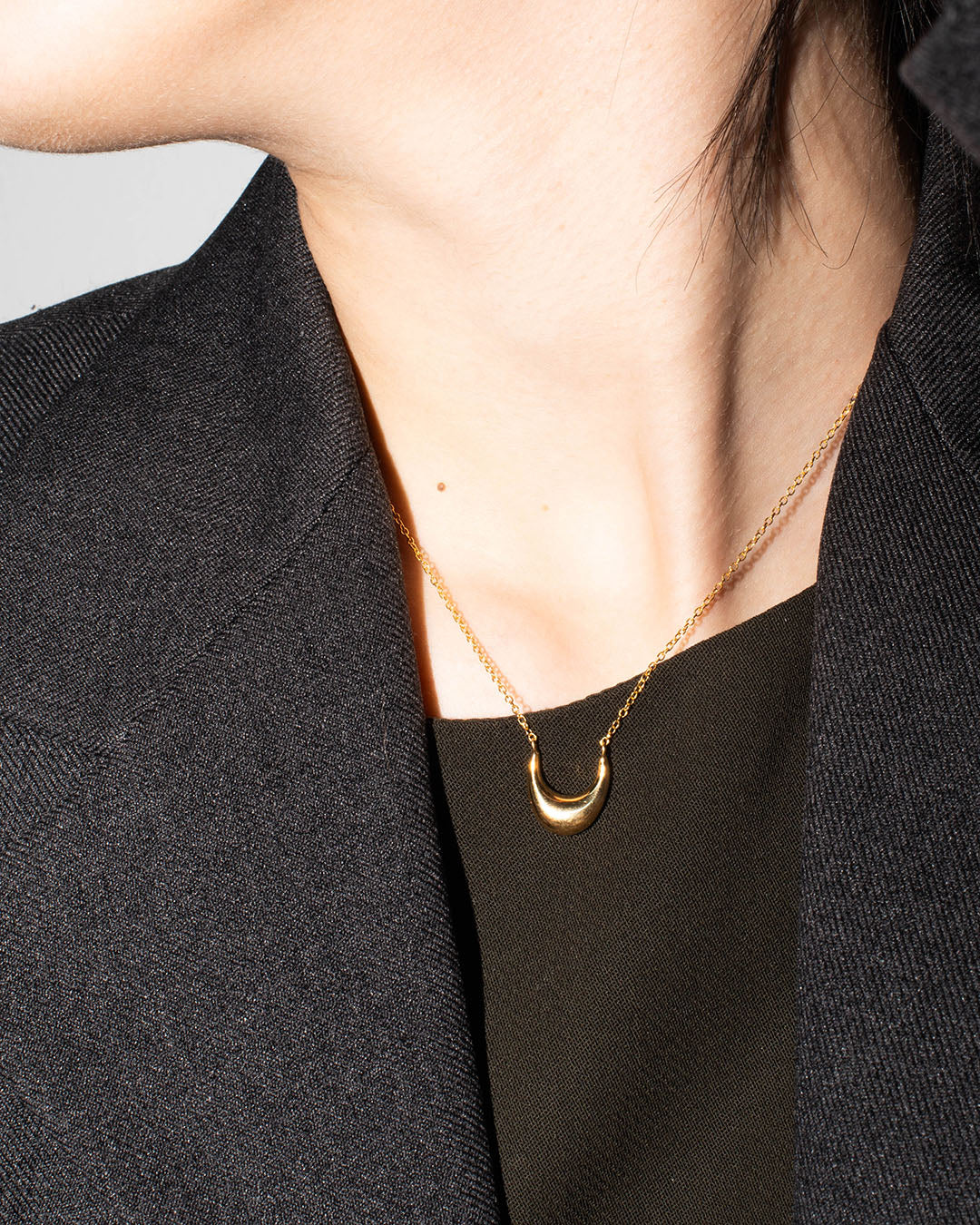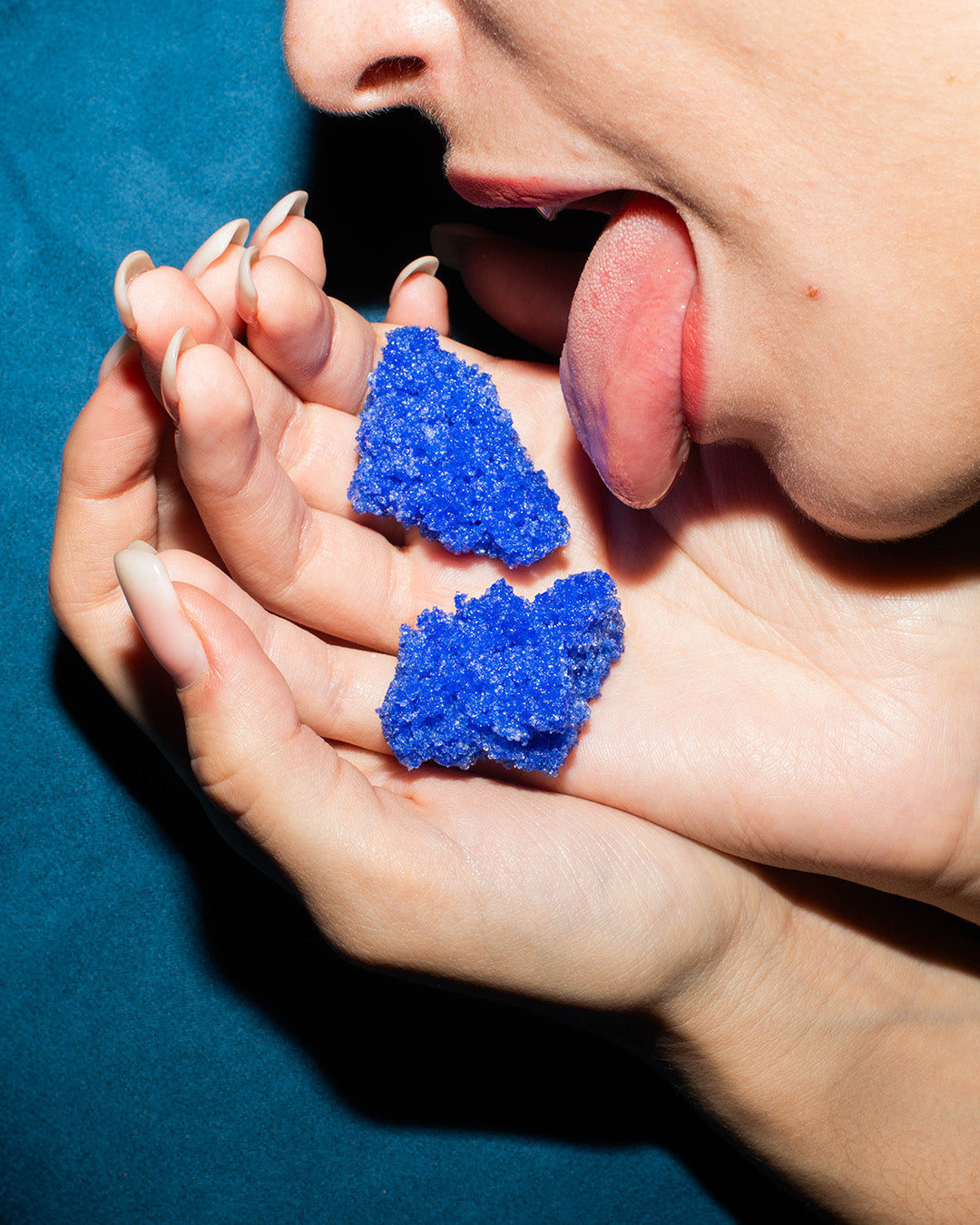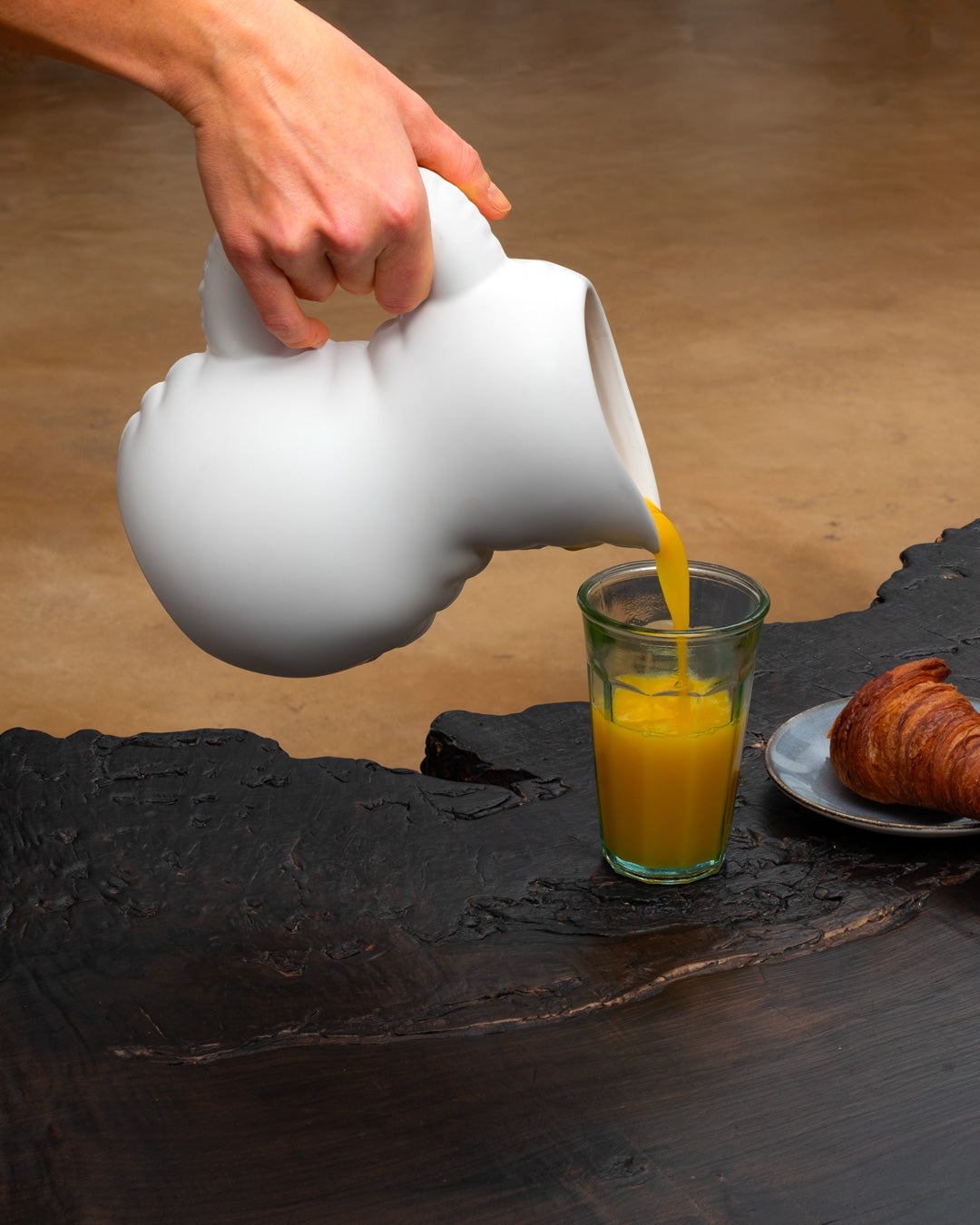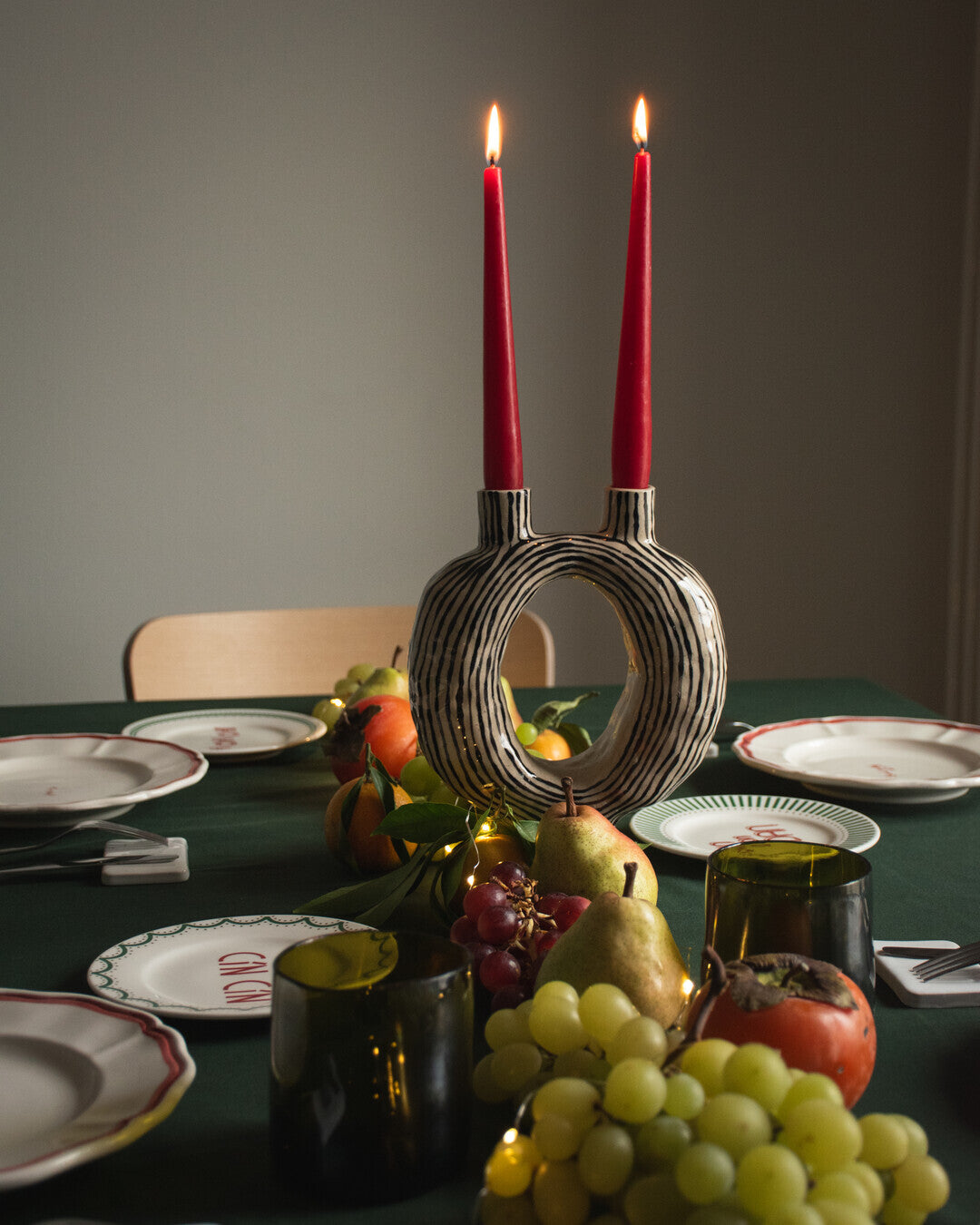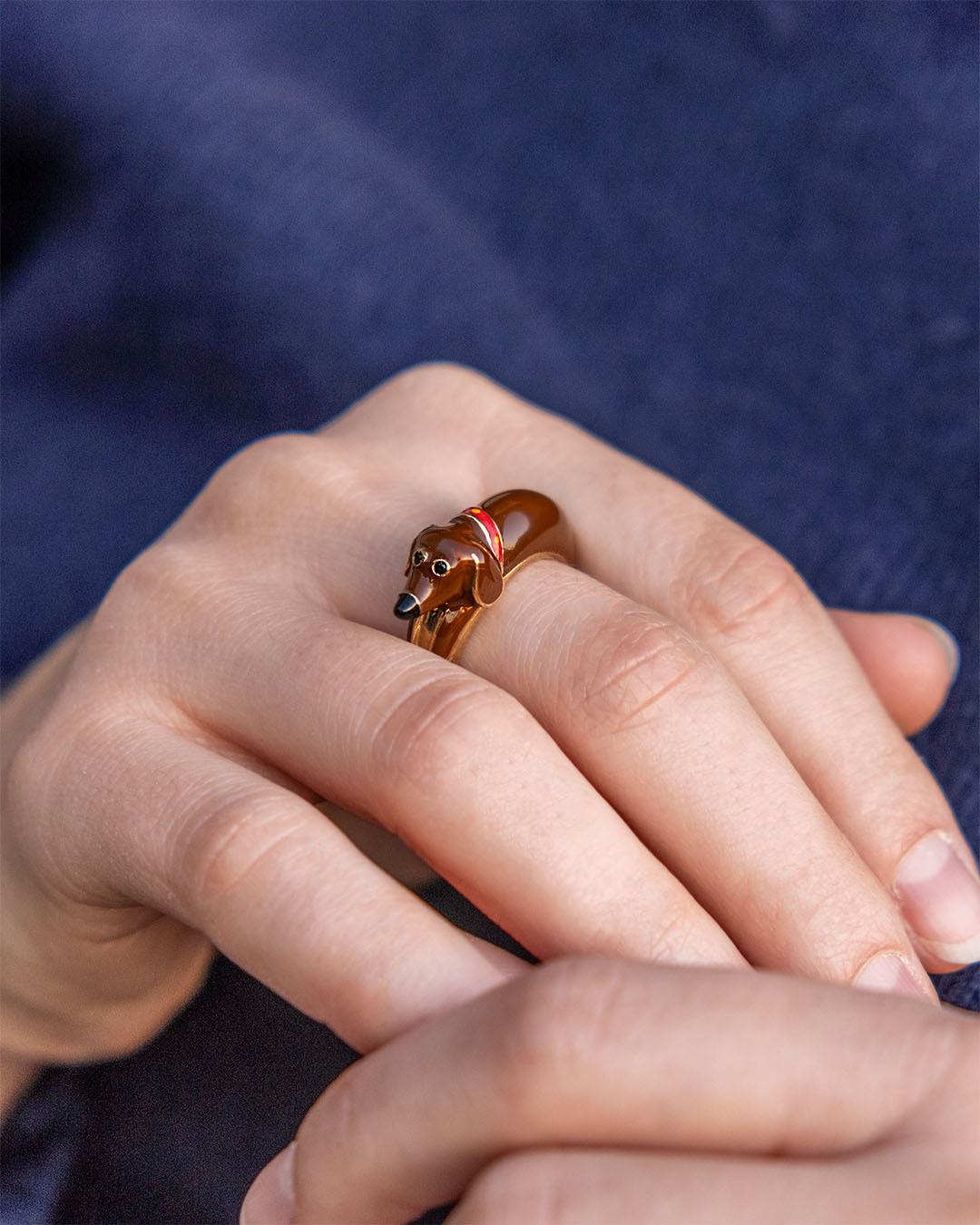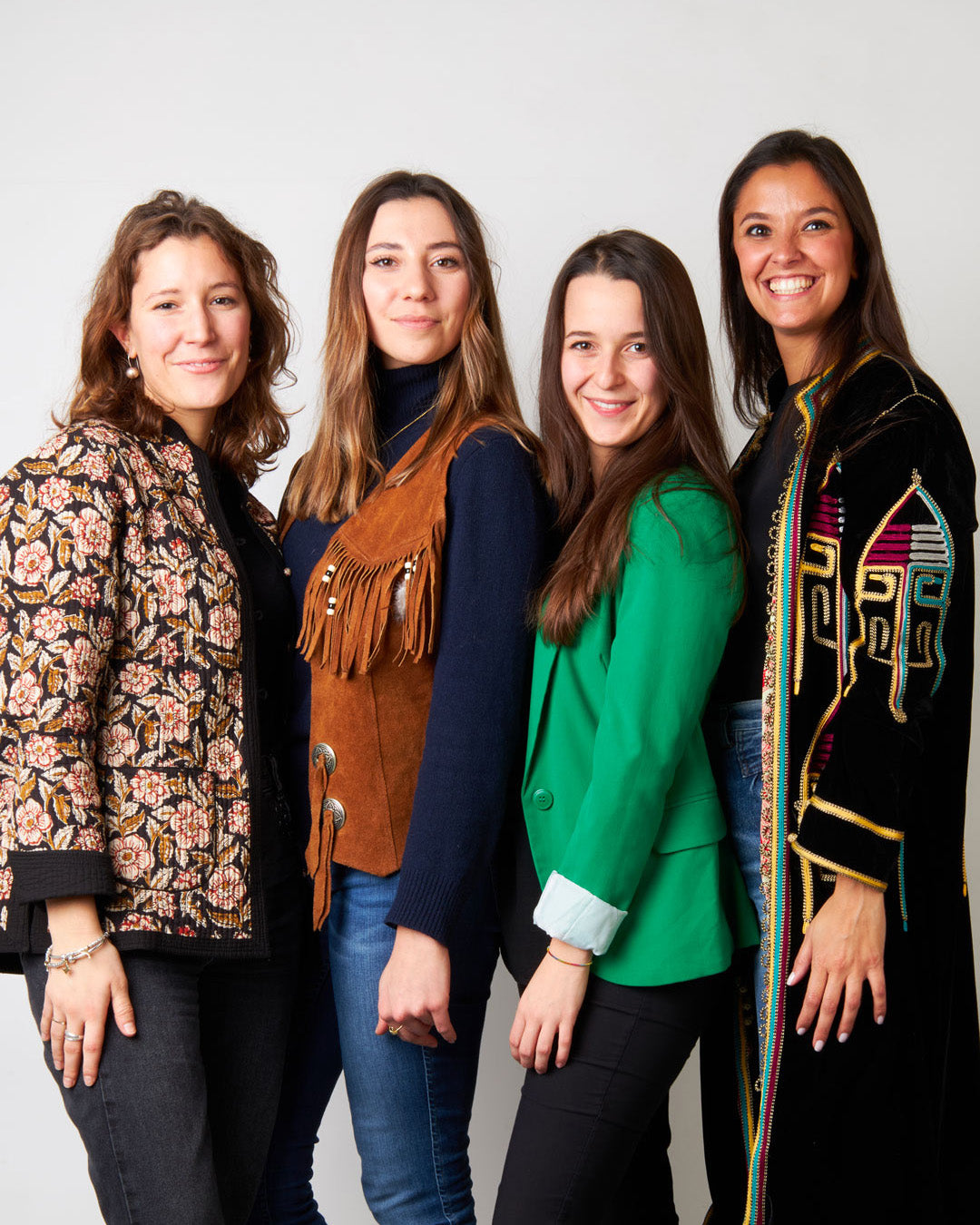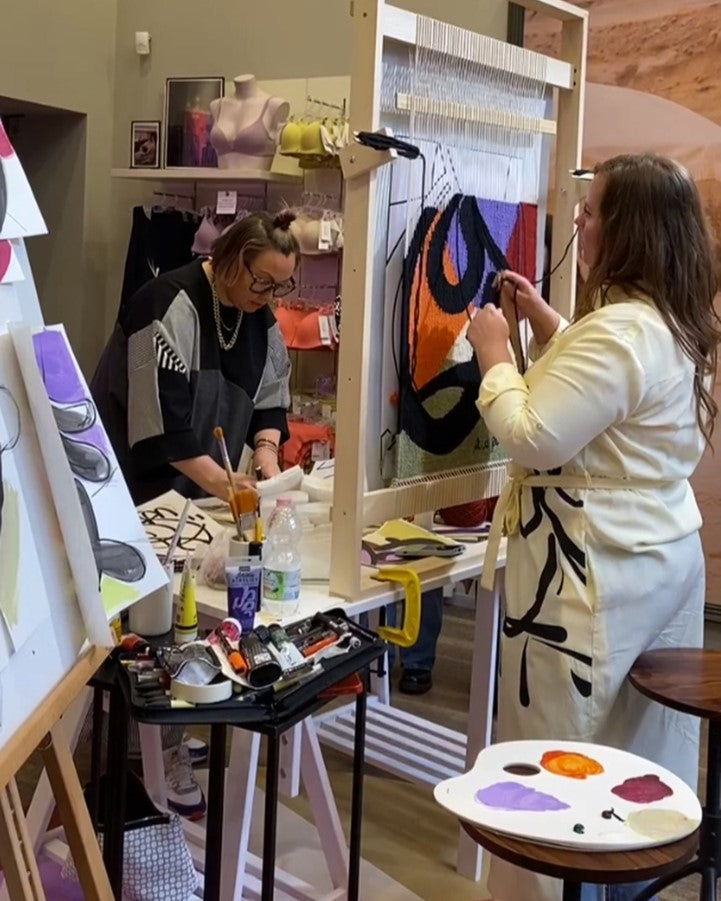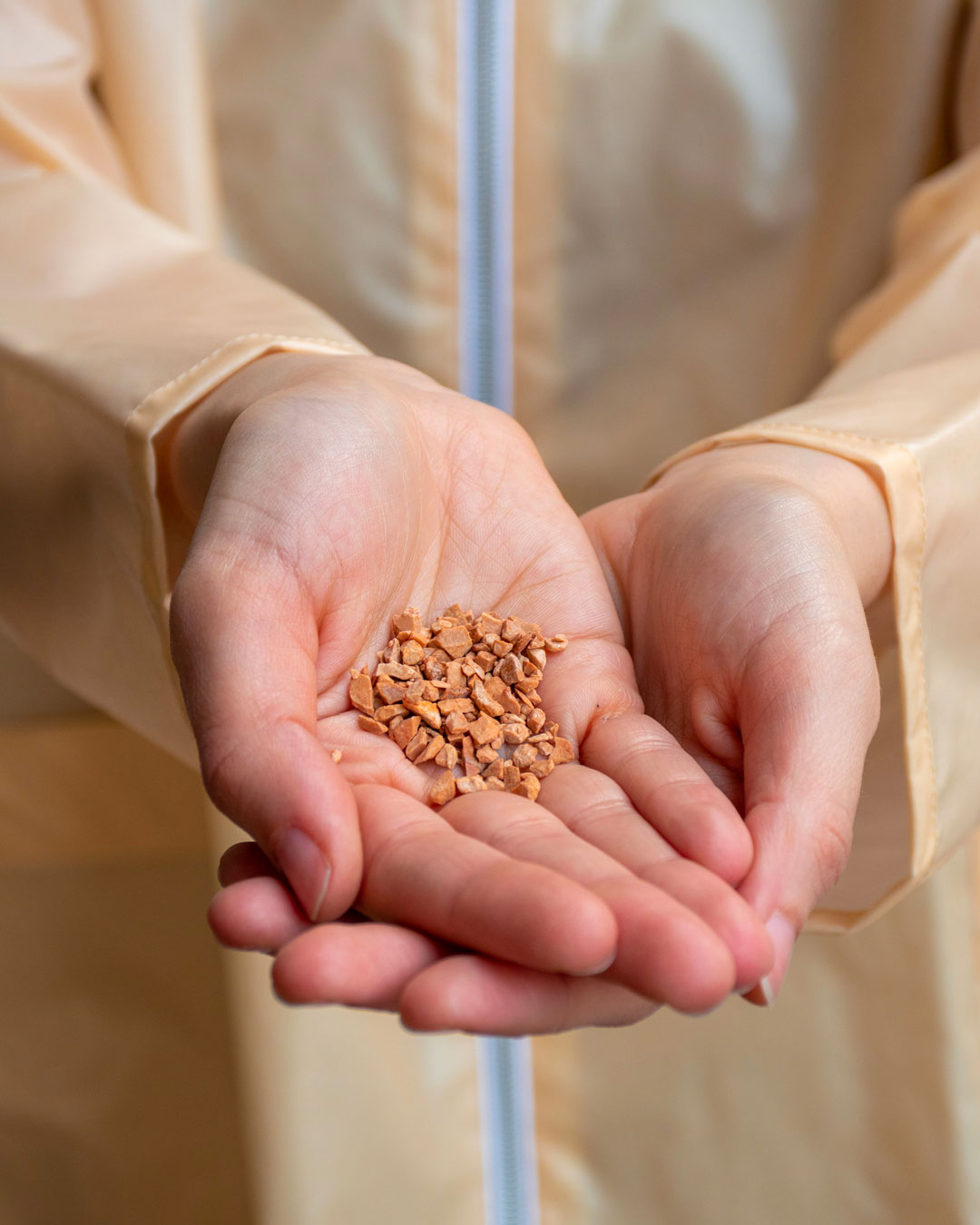Nicole McLaughlin is a New York-based designer.
In 2018, a hobby evolved into a career, one that focuses on the ever-evolving exploration around upcycling and sustainable fashion.
Taking a tongue-in-cheek approach to her creative process, Nicole has transformed old volleyballs into slippers, camera bags into bralettes, and crafted board shorts from packets of Haribo gummies. This unexpected translation of materials allows her to uniquely highlight the message of sustainability—a key element to her success in changing the perception around waste and sustainable design.
TA-DAAN had the pleasure to have a chat with her! Scroll down and let’s explore the magic world of Nicole McLaughlin together!

Hi Nicole, you definitely are pushing the concept of upcycling! What is the message you want to convey?
That we can change our perception of waste and what we can do with it, we just need to be willing to try.
The materials you start from to create your pieces are always surprising! What is the first creation you have made using food? How did it come to your mind?
My first food piece was the gummy bear slide in 2019. It was more about the packaging rather than the food component, and it evolved into other types of food and unpackaged foods from there. I was driving from New Jersey to Boston and saw the gummy bears at a gas station and said to myself, “I could use this for a project.”
Was it easy to make? Is the project well defined in your mind from idea to execution?
Yes, it was easy to make because the sandal already predetermined the shape. It fit perfectly and came to life the way I hoped it would.
 |
 |
 |
 |
Tell us something more about your creative process! Where do you start from? How do you source and select the starting material? What challenges you the most?
My process typically starts with the material. It’s what I focus on before turning my attention to creating. I find materials at thrift stores, online, finding things off the street pre-COVID, and sometimes I’m lucky enough to have brands send me their deadstock or damaged materials to upcycle. I find certain materials challenging. The less malleable, the more I have to alter the piece, so if I think something is going to be easy and it proves to be harder, it changes the output of my work—for instance, sporting equipment. A ball looks like it would be easy to work with, but it’s surprisingly not.

Are there other upcycling designers or artists you admire and would love to make a shoutout to?
Zero Waste Daniel. I like that he uses up the smallest of small scraps.
The Slow Factory for their continued support in the educational space.
 |
 |
 |
 |
